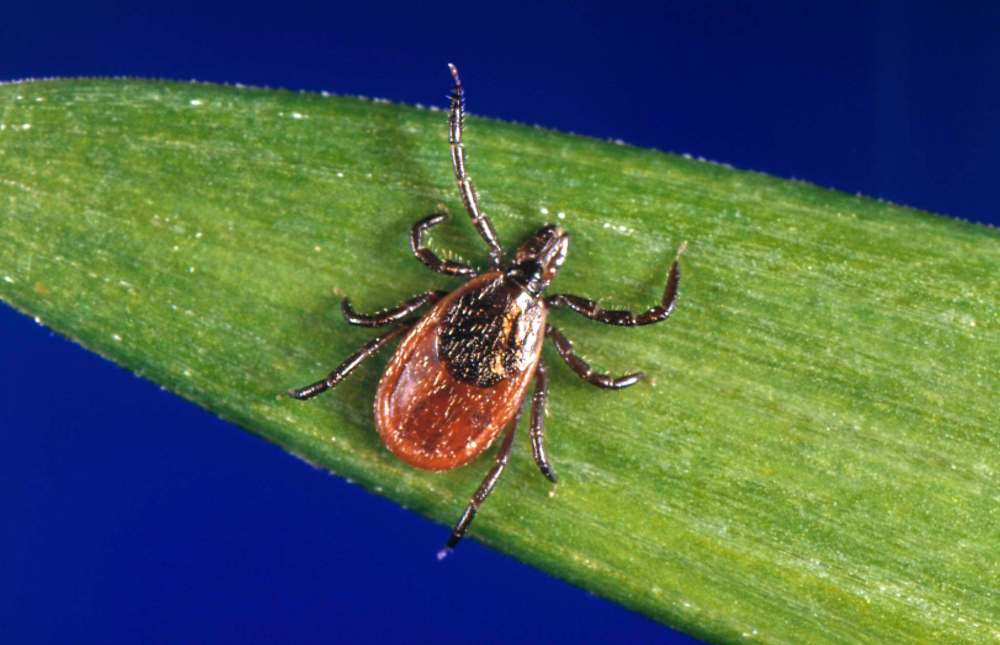Beware of ticks… and Lyme disease myths
Advertisement
Read this article for free:
or
Already have an account? Log in here »
To continue reading, please subscribe:
Monthly Digital Subscription
$0 for the first 4 weeks*
- Enjoy unlimited reading on winnipegfreepress.com
- Read the E-Edition, our digital replica newspaper
- Access News Break, our award-winning app
- Play interactive puzzles
*No charge for 4 weeks then price increases to the regular rate of $19.00 plus GST every four weeks. Offer available to new and qualified returning subscribers only. Cancel any time.
Monthly Digital Subscription
$4.75/week*
- Enjoy unlimited reading on winnipegfreepress.com
- Read the E-Edition, our digital replica newspaper
- Access News Break, our award-winning app
- Play interactive puzzles
*Billed as $19 plus GST every four weeks. Cancel any time.
To continue reading, please subscribe:
Add Free Press access to your Brandon Sun subscription for only an additional
$1 for the first 4 weeks*
*Your next subscription payment will increase by $1.00 and you will be charged $16.99 plus GST for four weeks. After four weeks, your payment will increase to $23.99 plus GST every four weeks.
Read unlimited articles for free today:
or
Already have an account? Log in here »
Hey there, time traveller!
This article was published 19/05/2020 (2025 days ago), so information in it may no longer be current.
The May long weekend brought with it the inevitable warnings to watch for ticks. But as the range of the blacklegged tick widens, its numbers increase, and the proliferation of the bacteria that causes Lyme disease among the insects continues to worsen, those warnings have become more dire.
In Manitoba, people should be on the lookout for ticks anywhere south of Dauphin.
“For instance, your pine-forested areas, their risk will not actually be quite as high as birch or oak-forested areas — where there’s lots of nice big leaves (that support) the rodents that survive underneath that. The ticks then survive on those rodents,” said Dr. Richard Rusk, the central medical officer of health services in Manitoba Health’s communicable disease unit.

Climatic changes in the past decade have made Manitoba more hospitable to the blacklegged tick. Their spread here has paled in comparison to Nova Scotia, Quebec and Ontario. Experts believe the tick infestation spread north into Manitoba from Wisconsin and Minnesota, which have been hotbeds for the creatures. There were 1,500 confirmed or probable cases in Minnesota in 2018.
For the time being, that’s roughly the same number of cases in all of Canada that year. The number is down slightly from 2017, when there were more than 2,000 cases across the country. In 2019, Manitoba had 64 confirmed or probable cases, up from 52 three years earlier.
Nicholas Ogden is the senior research scientist and director of public health risk in the sciences division of the Public Health Agency of Canada. He has studied Lyme disease since the 1990s. He says despite numbers going up substantially overall (in 2009, there were only 144 reported cases in Canada), there will still be years when the number dips, most likely due to weather variability.
“Increasingly with climate change we’ll see climate and weather variability, so we’ll have very hot years, and then we’ll have colder years. We’ll have very dry years and then we’ll have rainfall events and floods. So we’re going to have a lot more variability, and variability will have an impact on the ticks themselves: their abundance in the environment,” Ogden said. “But also on people (and how much they go outside). So those effects together can result in fluctuations in the number of cases.”
Ogden explains the weather variability determines how many of the young ticks — nymphs — survive, and ticks in their nymphal stage are the most likely to spread the bacteria that causes Lyme disease.
The ticks are gaining ground at about 35 kilometres a year. Once they move to a new area, they become endemic and their numbers take off.
The continued spread of ticks, and the resulting Lyme disease, has forced authorities to beef up testing and treatment practices. Ogden said Lyme disease is among the most-studied diseases in the world.
But that hasn’t stopped the spread of misinformation.
But that hasn’t stopped the spread of misinformation.
Rusk adds that people who believe they have contracted Lyme disease in Manitoba (or anywhere in Canada) are tested to the same standard available anywhere in the world. But some patients continue to go to the U.S. in the belief there are superior options.
“There’s always going to be frustrations with the health care system, and people will look elsewhere. That means to us, as physicians and as a health-care system, we have to then look at, ‘How do we address these people’s needs,’” Rusk said.
Ogden says misinformation has become harmful in some cases. “There is some information… that is unhelpful to the public. (For example), that Lyme disease cannot be diagnosed with the tests that we’ve got, that Lyme disease is not treatable, that we don’t have the specialist doctors in Canada, and so on,” Ogden said.

All of which is false.
“This is a consequence of people going to labs outside of Canada, and being tested by methods that are not recommended, that produce a lot of false positive test results. They certainly might be ill, but they most likely don’t have Lyme disease. Then they end up going for treatments for Lyme disease, which may be one of two things: one, frequently treatments that are not recommended, that may themselves be harmful if not applied to the right person. And two, it may mean that the person is diverted from the care they need for what they actually do have,” Ogden said.
Manitobans who find a tick are asked to submit a photo of it to the province-run Tick Checker website (forms.gov.mb.ca/TickSubmission). If the tick is indeed a black-legged tick (sometimes referred to as a deer tick) the province will want it for testing.
Rusk says research suggests few people know they were bitten or get the hallmark bull’s-eye rash. Everyone should be careful and monitor for symptoms after spending time off the beaten path. He recommends tucking long pants into socks, as well as using insect repellant that has DEET. Repellant-infused clothing that’s been treated with permethrin, an insecticide, is available.
“We’ve got to realize we have to live with it, and still go out into the woods, “ Ogden said.
Early treatment is critical in responding to Lyme disease.
sarah.lawrynuik@freepress.mb.ca
Twitter: @SarahLawrynuik
History
Updated on Tuesday, May 19, 2020 7:29 AM CDT: Corrects typo


